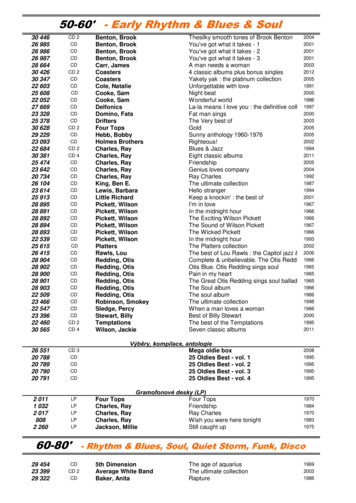
Transcription
Strategic Plan 2016 - 2020
CONTENTS1INTRODUCTIONA Message from the PresidentExecutive SummaryBackground3-53452ABOUT CHARLES R. DREW UNIVERSITY OF MEDICINE AND SCIENCE (CDU)Vision StatementMission StatementValues “CLEDIC”6-86783THE PLAN Theme One: Rebuild and Rebrand as a Comprehensive,Midsize Health Professions and Sciences University of Excellence9 - 169 Theme Two: Expand and Enhance Resources and Campus Infrastructureto Support a Midsize Health Professions and Sciences University10Theme Three: Expand and Enhance Institutional Resource Generating Capacity11Theme Four: Revamp and Restructure the Internal Operating,Management and Governance Systems12Theme Five: Expand, Enhance, and Integrate the Research Enterprise13 Theme Six: Reposition the University as a Student‐Centered Institutionthat Offers a Unique Education, Student Life and Residential Experience14 Theme Seven: Regenerate and Refocus the Campus Climate and Cultureas a Responsive, Caring, and Enterprising Community15 Theme Eight: Adopt and Expand Strategic Networking, Partnership,and Engagement with the Community, Institutions, Organizations, and Governments164STRATEGIC PLANNING COMMITTEE175THE CDU ADVANTAGE18
1INTRODUCTIONA Message from the PresidentAs Charles R. Drew University of Medicine and Science (CDU) celebrates its 50th anniversary,I am very excited to share with you our 2016-2020 Strategic Plan. This Plan provides theUniversity community, its stakeholders and its partners with a roadmap for the University’strajectory for the next five years. That trajectory is one of growth in both academic programsand enrollment while remaining true to CDU’s formative commitment of service to underservedand underresourced communities.The plan articulates a revised Vision, Mission, and Values that reaffirm and strengthen CDU’slongstanding foundational principles and sets forth a bold statement for the future of ourUniversity. It utilizes eight Strategic Themes and accompanying Objectives that clearly articulatehow the University will proceed toward achieving this future, ensuring that Charles R. DrewUniversity of Medicine and Science will be an institution of excellence and accomplishment. Theoverall theme and thrust behind this iteration of strategic planning is to lay the foundations forrepositioning CDU as a growing, research intensive, comprehensive medical and health professionsUniversity committed to building upon its historic legacy of:1. Training health professionals to serve underserved, underresourced communities2. Enhancing the diversity of the health professions3. Expanding undergraduate and graduate enrollment4. Increasing access to outpatient health care in South Los Angeles and similar communitiesThese University roles are particularly important in the context of training a health professions workforce that is relevant to therapidly developing health and health care priorities of 21st Century.The strategic planning process began in June 2015 and continued for seven months under the aegis of shared governance. Theprocess was completed in January of 2016 and approved by the University’s Board of Trustees in February of 2016. I thank themembers of the Strategic Planning Committee for their ardent participation in the development phases of this Plan. A debt ofgratitude is also extended to the CDU community: community partners, leaders, and residents, CDU Board of Councilors, President’sCommunity Advisory Council (CDU), Executive Service Corps (ESC), business partners, CDU faculty, staff, students, and alumni all ofwhom comprise the Charles R. Drew University of Medicine and Science family. Thank you for willingly giving of your time to helpadvance and grow the University.In the coming years, CDU will be focused on growth while ensuring quality education and services. The task before us now is tofollow through with this Plan and implement its objectives. I am confident that with the dedication of University staff, faculty, alumni,students, and strategic partners, CDU will continue to fulfill its unique and compelling Mission of training future generations of healthprofessionals dedicated to serving underserved and underresourced communities – with excellence and compassion – as we strive toachieve our Vision of a world without health disparities.Thank you.David M. Carlisle, MD, PhDPresident and CEO3
1INTRODUCTIONExecutive SummaryThis Strategic Plan is developed and adopted at a critical time asCharles R. Drew University of Medicine and Science celebrates its50th year of service and stands at an inflexion point for significantfuture growth and expansion. The Plan represents a bold agendafor the future, a strategic departure from its struggling past, andan audacious recommitment to its mission.President David M. Carlisle began the strategic planning process inJune 2015 with the formation of the Strategic Planning Committeeand the appointment of the co-chairs, Dr. Steve O. Michael,Executive Vice President for Academic Affairs and Provost, andDr. Mohsen Bazargan, Academic Senate President. The planningprocess was designed to be inclusive, ensuring representation ofall the major stakeholders and opportunities for community inputat different stages of development.The Strategic Planning Committee reviewed and revised themission and vision statements while retaining the central messageof health and wellness for all. A new set of values was developedand using both primary and secondary sources of data, theCommittee generated eight Strategic Themes: STRATEGIC THEME 1: Rebuild and Rebrand as aComprehensive, Midsize Health Professions andSciences University of Excellence STRATEGIC THEME 2: Expand and Enhance Resourcesand Campus Infrastructure to Support a Midsize HealthProfessions and Sciences University STRATEGIC THEME 3: Expand and Enhance InstitutionalResource Generating Capacity STRATEGIC THEME 4: Revamp and Restructure the InternalOperating, Management and Governance Systems STRATEGIC THEME 5: Expand, Enhance, and Integratethe Research Enterprise STRATEGIC THEME 6: Reposition the University asa Student‐Centered Institution that Offers a UniqueEducation, Student Life and Residential Experience STRATEGIC THEME 7: Regenerate and Refocus theCampus Climate and Culture as a Responsive, Caring,and Enterprising Community STRATEGIC THEME 8: Adopt and Expand StrategicNetworking, Partnership, and Engagement with theCommunity, Institutions, Organizations, and Governments4Each of the themes were further defined by the followingcomprehensive set of goals: Be known as a comprehensive University that is producinghigh quality health professionals and research for theunderserved communities. Ensure the provision of the human, physical, and financialresources and infrastructure needed for a midsize campuspopulation. Explore and maximize all sources of funding available to aprivate university of health professions and sciences. Adopt programs that will ensure greater efficiency andeffectiveness of campus operations and systems. Be a leader in health disparities research by translatingscientific discoveries into education, training, clinical care,treatment and community service. Provide excellent and unique educational programs andservices that support student academic, professional, andpersonal development. Be recognized as a University that exemplifies a climateof collegiality; promoting an atmosphere of trust, respect,and dignity. Be known as a community-serving University through CDUcollaborations, partnerships, and integration withkey stakeholders.The implementation of these strategic goals is the responsibilityof each member and unit of the University for the next five years.To ensure continuing progress, the annual budget exercise will beintegrated with the annual planning exercise that will be prefacedwith an annual progress report.
1INTRODUCTIONBackgroundCharles R. Drew University of Medicine and Science (CDU) is aprivate, non-profit, non-sectarian, minority-serving medical andhealth sciences institution located in South Los Angeles, California.The University was founded in 1966 after a report by the McConeCommission (“Violence in the City: An End or a Beginning”– Governor Edmund G. Brown) cited poor health status anddiminished access to quality education, healthcare, employment,and safety as key factors sparking the 1965 civil revolt in the localcommunity. CDU is the only designated minority-serving healthsciences University in a county with a population of more than 10million residents, 70% of whom are from minority communities.The University earned designation as a minority-serving institutionby the U.S. Office for Civil Rights, and is recognized by theDepartment of Education under Title III, Part B as a HistoricallyBlack Graduate Institution. CDU is also a charter member of theHispanic-Serving Health Professions Schools, a national not-forprofit organization dedicated to improving the health of Hispanicpeople through research initiatives, training opportunities,and academic development. The University serves as the onlyacademic health sciences center for the 1.5 million residents ofSouth Los Angeles.The University has contributed significantly to the diversity of thenation’s healthcare workforce for nearly 50 years by graduatingmore than 550 physicians, 1,200 physician assistants (PAs), andhundreds of other health professionals. Additionally, CDU hastrained over 2,700 physician specialists through its sponsoredresidency programs. The University’s most recent degreeprogram, the Mervyn M. Dymally School of Nursing (MMDSON),has graduated over 560 nursing professionals, including over 400family nurse practitioners, since its opening in 2010. More than70% of the University graduates since 2000 are ethnic minorities,and more than 80% of alumni report serving underservedcommunities following graduation. In addition to direct patientcare, CDU graduates work in research centers, universities, andgovernment settings to redress health disparities and promotehealth equity. Alumni, faculty, and research and clinical fellowshave become national leaders in higher education, governmentservice, research institutions, and clinical enterprises.Academic quality is further validated by prestigious regional andnational programmatic accreditations. CDU was first accreditedin 1995 by the WASC Senior College and University Commission.The MD degree for the Drew/UCLA Medical Education Programis granted by the University of California, through UCLA, andis accredited by the Liaison Committee on Medical Education.The associate degree of the Radiologic Technology Programis accredited by the Joint Review Committee on Education inRadiologic Technology, and also must be certified by the CaliforniaDepartment of Public Health. The Master of Public Health(MPH) Program in Urban Health Disparities is accredited by theCouncil on Education for Public Health, and the MPH programalso offers a Graduate Certificate in Public Health Concepts. TheMaster of Science in Nursing (MSN) Program is accredited bythe Commission on Collegiate Nursing Education and approvedby the California Board of Registered Nursing. The MMDSONalso offers post-master certificates in Family Nurse Practitionerand Advanced Nursing Education. All of the degree programs atthe University have earned the maximum duration of nationalprogrammatic accreditation.The University has contributed significantly to the diversity of thenation’s healthcare workforce for nearly 50 years by graduating more than550 physicians, 1,200 physician assistants (PAs), and hundreds of otherhealth professionals.5
2ABOUT CDUVision StatementExcellent health and wellness for allin a world without health disparities.6
2ABOUT CDUMission StatementCharles R. Drew University of Medicine and Science isa private non-profit student-centered University thatis committed to cultivating diverse health professionalleaders who are dedicated to social justice andhealth equity for underserved populations throughoutstanding education, research, clinical service, andcommunity engagement.7
2ABOUT CDUValuesCLEDIC A set of CDU values that guides daily operationsCommunityAt CDU, community encompasses historically underserved, underresourced, andunderrepresented groups such as those in South Los Angeles and around the worldthat are impacted by health disparities. As a value, “community” is the bindingspirit that inspires and drives our unique approach in preparing health professionalsdedicated to social justice and health equity.LeadershipAt CDU, we hold ourselves accountable and define our collective and individualresponsibility as a catalyst for change necessary to reduce and eliminate healthdisparities. As a value, “leadership” means we embrace our role as a pioneer inhealth education and research.ExcellenceAt CDU, excellence is the highest quality performance in our operations,interactions, activities, and service to our community. Excellence invokes the desireto challenge and transcend the status quo. As a value, “excellence” represents thetransformation we seek in ourselves and in our students, faculty, and staff.DiversityAt CDU, diversity is defined by the multiple perspectives and ideas, pluralityof cultures, variety of ethnicities, and differences in individuals within ourcommunities. As a value, “diversity” represents a quintessential element ofhumanity and social justice for all.IntegrityAt CDU, integrity is the strength of character necessary to remain true to our valueseven in the face of adversity. As a value, “integrity” is conducting trustworthy,ethical, and respectful education, research, clinical, and other services in ourcommitted engagement with underserved communities.CompassionAt CDU, compassion is empathy for the plights and predicaments of disadvantagedpopulations. As a value, “compassion” propels us to hear the voiceless, compels usto advocate for the oppressed, and obliges us to seek relief for the deprived.8
3THE PLANSTRATEGIC THEME 1Rebuild and Rebrand as a Comprehensive, Midsize HealthProfessions and Sciences University of ExcellenceRationaleUniversities, like all living organisms, take their own developmental paths, gothrough their own evolutionary paths. The mission that creates an institution isalmost always narrower than the current mission. Most universities started small –smaller in size, narrower in focus, and smaller in scope than what they eventuallyevolve to become. Many universities started as a small normal school with themission to produce teachers. Some sectarian institutions started small with themission to produce priests and clergies. But today, these institutions have becomelarger with a more comprehensive mission in response to the growing needswithin their environments. Also, institutions expand their operations over timeto take advantage of the economies of scale. Few institutions can afford the hugeoverhead necessary to run a successful modern university. Most institutions thatremain small intentionally do so primarily because of their huge endowments thatprovide the necessary financial cushion and their relative tuition inelasticity thatenables them to become price leaders. In addition, while there are many successfulspecialized institutions in the nation, many of these institutions evolve to becomecomprehensive even within their specialized offerings. Lastly, many institutions witha difficult past evolve out of their difficulties by learning from their past, rebrandingthemselves to embrace a future that is robust with opportunities and possibilities.Established 50 years ago, Charles R. Drew University of Medicine and Science (CDU)has been on its own evolutionary path. While some might say the evolution has notfully capitalized growth opportunities, the evolution is nonetheless a step in theright direction. At its creation, CDU was conceived as a postgraduate medical schooland later a medical education partnership program with UCLA was established—an arrangement that remains today. Only recently has the University taken theinitiative to establish the School of Nursing and invest in the College of Scienceand Health, which remains a very small collection of loosely coupled academicmajors. Consequently, CDU has been unable to take advantage of the economies ofscale because of the very small student enrollment and only very recently has theUniversity turned a corner from its very difficult past.Given the recent success with WASC Senior College and University Commission(WSCUC) reaccreditation, financial stability, and stable executive leadership; itis now imperative for CDU to embrace a larger mission, adopt a more optimisticvision, embark on image rebranding, and take a leap in assuming its rightful placeamong the nation’s leading medical, science, and health institutions. The urgentand growing healthcare needs of the underserved populations compel this changeand the increasingly complex historical, socio‐economic political environment ofCDU demands a strategic growth. Consequently, rebuilding and rebranding CDUas a comprehensive, midsize health professions science, and health University ofexcellence is a strategic vision and direction.STRATEGIC GOAL: Be known asa comprehensive university thatis producing high quality healthprofessionals and research for theunderserved communities.Strategic Objective 1: Increase thenumber of undergraduate majors andgraduate degrees leading to most ofthe health professions critically lackingin underserved communities.Strategic Objective 2: Increaseundergraduate and graduate studentenrollments to at least 2000 students inthe next 5 years.Strategic Objective 3: Restore andexpand Graduate Medical Education(GME) programs.Strategic Objective 4: Enhancethe quality assurance of academicprograms to promote programexcellence and surpass all externalexamination or accreditationrequirements.Strategic Objective 5: Create a mediapresence as a comprehensive healthprofessions and sciences university with afocus on health disparities.Strategic Objective 6: Introduce doctoralprograms that will result in meetingcriteria for a Carnegie classification asa Doctoral II research intensive, healthprofessional institution.Strategic Objective 7: Rebrand thereputation of CDU as a research‐intensivecomprehensive health professions andsciences university with excellencein Med‐STEM and with a focus onunderserved populations.9
3THE PLANSTRATEGIC THEME 2Expand and Enhance Resources and Campus Infrastructureto Support a Midsize Health Professions and Sciences UniversityRationaleThere are inevitable tensions between the academic and business imperatives ofhigher education institutions that become magnified during periods of rapid growth.The benefits of purposeful well-managed growth include advantages of economiesof scale and reduction of growth associated tensions. To accomplish the academicmission effectively, growth must be staged and resources must be made availablein commensurate with every stage of the growth. A midsize university requirescertain levels of infrastructure to support its operations. Maintaining alignmentwith institutional vision and mission, living within financial means, and ensuringappropriate quality assurance controls are integral to successful transitions ofrapidly growing higher education organizations.Although Charles R. Drew University of Medicine and Science (CDU) was on thebrink of financial insolvency a few years ago, a financial lifeline was furnished inpart by a growing research infrastructure endowment funded by National Instituteof Health, and by substantial academic affairs infrastructure funding from TitleIII programs of Department of Education. By 2011, CDU had re-structured withnew leadership and re-balanced its financial books to work within its tuition/fees, research overhead, and endowment return means. The turnaround of theUniversity was validated externally by progressively improving financial audits andre-affirmation of regional accreditation for an eight-year cycle (through 2018).While at the moment, campus resources and infrastructure adequately supportthe current enrollment of about 700 students and can reasonably be expected tosupport up to 1000 full-time students, growth beyond this number will undoubtedlyrequire infusion of additional resources.Therefore, in order to grow dramatically and thrive as an institution withoutcompromising the quality of its mission-driven service to students and underservedcommunities, CDU must focus first on infrastructure capacity preparedness. For thenext five years, CDU will focus on resource expansion: recruiting and hiring wellqualified faculty and staff to meet enrollment increase, expanding an IT system thatcan support a much larger campus, expanding the campus footprint as necessary,and providing infrastructure befitting a comprehensive, midsize university.STRATEGIC GOAL: Ensure the provisionof the human, physical, and financialresources and infrastructure neededfor a midsize campus population.Strategic Objective 1: Recruit andretain talented and committedpersonnel to meet demands for growthin the scope and quality of academicprograms and administrative services.Strategic Objective 2: Build operationalbridges within and across differentacademic and business units forcrosscutting initiatives under a oneuniversity model for CDU administration.Strategic Objective 3: Introduce andpromote programs that expand humanresource capacity and create successionplanning programs that identify andfoster the next generation of leaders,managers, and support personnel fromwithin the institution.Strategic Objective 4: Stage deploymentof infrastructure capacity and resourcesto coincide with the pace and timingof growth in academic programs andstudent enrollments.Strategic Objective 5: Expand campusphysical capacity with new real estate,buildings, and satellite or affiliatefacilities and redesign the campuslandscape that provides an attractivecampus personality to learners andserves as a beacon of hope and pride tothe surrounding community.Strategic Objective 6: Increaseunrestricted funding for studentscholarships, instructional programs, andacademic and student support services.10Strategic Objective 7: Create financialreserves and cash flow contingency plansfor mitigation of risk from unexpectedliquidity constraints or disruptions.
3THE PLANSTRATEGIC THEME 3Expand and Enhance Institutional ResourceGenerating CapacityRationaleMaintaining a diversified portfolio of revenue streams provides a level of stabilitysimilar to that of a diversified investment portfolio. A negative impact on one streammay be counterbalanced by a positive impact on another stream; thus, reducing theoverall effect on the total yield. Similarly, contingency funds (either in the shape ofunrestricted endowments or cash investments) play an important role in allowinguniversities to pursue new opportunities, or to weather disruptions in one or morerevenue stream. Both diversification and contingency planning are crucial to longterm institutional strength. Therefore, institutions strive to optimize funding fromsources such as tuition, research grants/contracts, clinical service revenue, gifts/fundraising, public/government funding, and auxiliary enterprises.CDU was founded with a broad and important mission, but with a narrow range ofsources of funding. As a Post-Graduate Medical School, CDU focused on supportinggraduate medical education at the King/Drew Medical Center (KDMC), and virtuallyall its revenue at that time was derived from a reliable stream of public fundingfrom county and state sources. With the closure of KDMC, the University wasforced to reconsider its revenue sources and expenses. Currently, major sourcesof funding include state funds ( 20%) tuition ( 20%), and research grants ( 45%).Indeed, the current revenue structure does not mirror the revenue structure of atypical private university.The current financial structure provides opportunity for further diversificationand growth and the future of CDU lies in the ability to maximize these sources offunding. CDU has to consider programs not only in terms of the value to the mission,but also in terms of their fiscal sustainability. To continue to grow and thrive asan institution, CDU must focus on expanding its capacity to generate revenue insupport of the institutional mission—a major priority for the Administration in thecoming five years.STRATEGIC GOAL: Explore andmaximize all sources of fundingavailable to a private university ofhealth professions and sciences.Strategic Objective 1: Diversifyfunding sources to improveinstitutional financial sustainability.Strategic Objective 2: Maximizerevenue generation from tuition,major gifts, grants, auxiliaryenterprise, government supportand investments.Strategic Objective 3: Continue toenhance financial reserves andcredit worthiness.Strategic Objective 4: Develop andimplement marketing strategiesto increase university visibility andattract students and resources.Strategic Objective 5: Developfaculty practice plan and exploreopportunities to operate health clinics.11
3THE PLANSTRATEGIC THEME 4Revamp and Restructure the Internal Operating,Management, and Governance SystemsRationaleThe modern university is a complex organization and the larger the scale ofoperations, the larger the complexity. This is so because of the typically broadinstitutional mission, multiple and conflicting institutional agenda, large numberof diverse institutional stakeholders, diverse expertise of the internal constituents,and the increasing regulatory environment within which universities operate.The changing demography of students as well as the ever changing technologydemand require a never-ending attention to operational and system efficiency andeffectiveness. Thus, progressive institutions are adept at instituting a culture ofcontinuous improvement in compliance with the changing regulatory environmentand in pursuit of better, more efficient and effective internal operations.Charles R. Drew University of Medicine and Science (CDU) has a unique missionwith a history that reflects engagement with a diverse community. While externalfunding provides opportunities for growth, the different agendas of these fundingagencies have had a less than unified and integrated approach to internal planningand operations. As a small school, CDU relies on limited staffing with all theproblems associated with system personalization, lack of continuity, and loss ofinstitutional memory in critical areas. As the University stands at the threshold ofmajor growth, the community is acutely aware that the status quo with respectto policies, processes, and procedures of operations is inadequate to respondefficiently and effectively to its mission.Therefore, CDU leadership will focus attention on system review, upgrade,and renewal in the next five years. The drive toward a one-university conceptnecessitates a more integrated approach and the need to make academic affairsthe heart of CDU’s operations and activities. The University will be committedto recruiting the best talents and ensuring that all faculty and staff receiveappropriate professional development necessary for effective performance oftheir roles and responsibilities.12STRATEGIC GOAL: Adopt programsthat will ensure greater efficiency andeffectiveness of campus operationsand systems.Strategic Objective 1: Implementa University enterprise resourceplanning (ERP) platform and developan IT steering committee with therole of monitoring implementation oftechnology projects.Strategic Objective 2: Continue to expandon the process of shared governancebetween the multiple stakeholders.Strategic Objective 3: Develop a cultureof continuous improvement and qualityassurance using University dashboarddata to monitor progress.Strategic Objective 4: Develop a processfor review of all the institutional units andcommittees; and evaluate and updatethe policy and procedures based on thechanging landscape of compliance.Strategic Objective 5: Develop acomprehensive business continuity anddisaster recovery plan.
3THE PLANSTRATEGIC THEME 5Expand, Enhance, and Integrate the Research MissionRationaleThe Charles R. Drew University of Medicine and Science (CDU) Research Enterprisehas emerged as a leading player in the national effort to eliminate health disparities,specifically through three areas of focus which disproportionally affect thesurrounding Los Angeles Service Planning Area 6: Cancer, Cardiometabolic disease,and HIV/AIDS.Over many years of significant effort from talented faculty, dedicated staff, aspiringstudents, and incredible community champions, CDU’s Research Enterprise hasgrown to address these areas of health disparities through a multi-prongedtranslational research approach. The efforts of our research have garnerednumerous national and international recognition, awards, and competitive grantfunding from the National Institutes of Health, the Department of Defense, andother national sources. The excellence in research at CDU has resulted in CDUconsistently being ranked in the top 10% of all US institutions receiving federalfunding, and top 3% of Historically Black Colleges and Universities receiving federalfunding. In addition to the excellent record of extramural funding, CDU’s researchhas built an 80M endowment, which continues to complement the resources fromextramural funding and sustain research efforts at CDU.The excellent research at CDU is a critical component for sustaining the visibility andcredibility of CDU as an academic institution. However, there is more opportunityand need for growth. In the coming years, CDU will embark on efforts to reorganizeresearch administration in furtherance of the research mission. Extending theresearch pillars to health areas that chronically affect the underserved communitiesis particularly advisable. Given that the research strengths at CDU currently lie inareas such as Can
Charles R. Drew University of Medicine and Science (CDU) is a private, non‐profit, non‐sectarian, minority‐serving medical and health sciences institution located in South Los Angeles, California. The University was founded in 1966 after a report by the McCone Commission ("Violence in the City: An End or a Beginning"
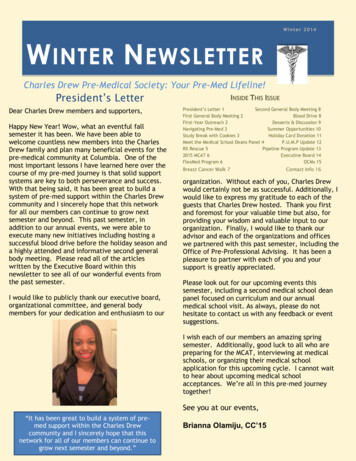
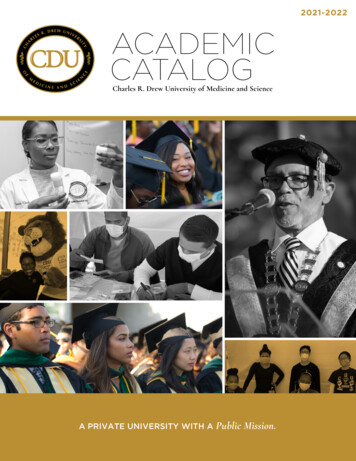

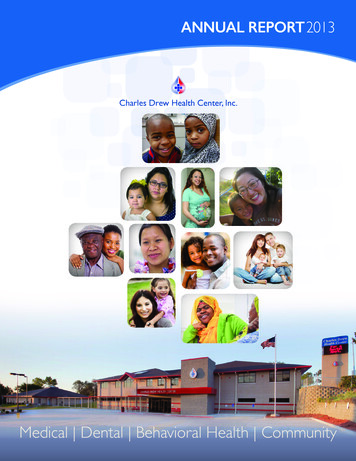
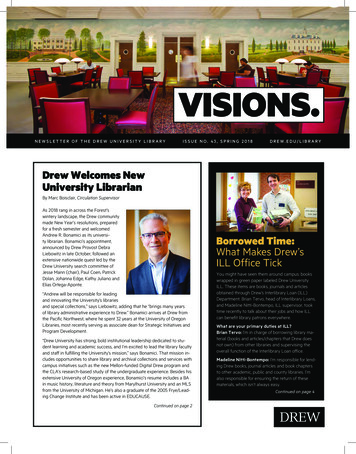


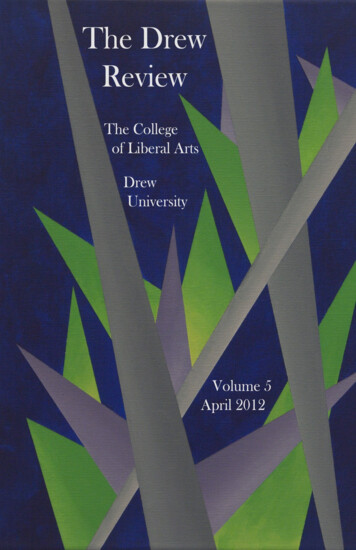
![The Book of the Damned, by Charles Fort, [1919], at sacred .](/img/24/book-of-the-damned.jpg)
